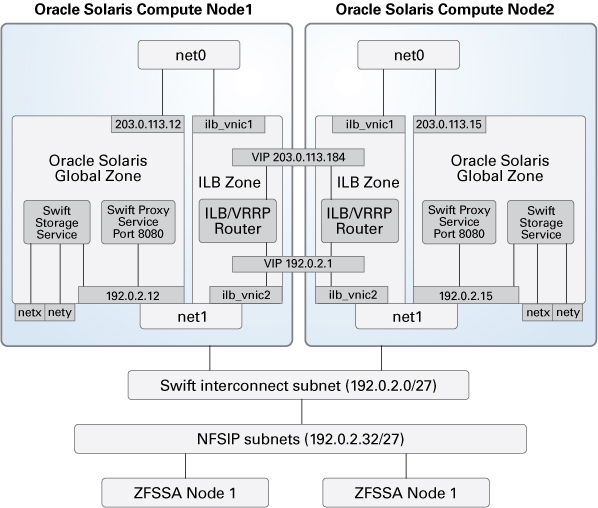Configuring ILB for High Availability By Using the DSR Topology in Zones
Objective – This use case shows the OpenStack Swift implementation using Swift data services on two SPARC systems and a separate storage subsystem for the Swift object store for each system. In this use case, different services run in parallel in the global zones of two systems.
A network load balancer (ILB) with the redundancy protocol (L3 VRRP) is used to distribute the incoming requests between the two server and provide redundancy without the need for additional hardware to implement the IP load balancer. The L3 VRRP removes the need to configure unique VRRP virtual MAC addresses for VRRP routers and provides better support in zones.
This use case also shows how to configure ILB and VRRP for high availability with ILB and VRRP services running in a Oracle Solaris zone.
Figure 8 Configuration of ILB and VRRP on Zones

This figure shows a network with two compute nodes with the following components:
-
Two compute nodes
-
Storage and proxy services running on global zones of both the compute nodes
-
ILB/VRRP routers in the ILB zones of the compute nodes